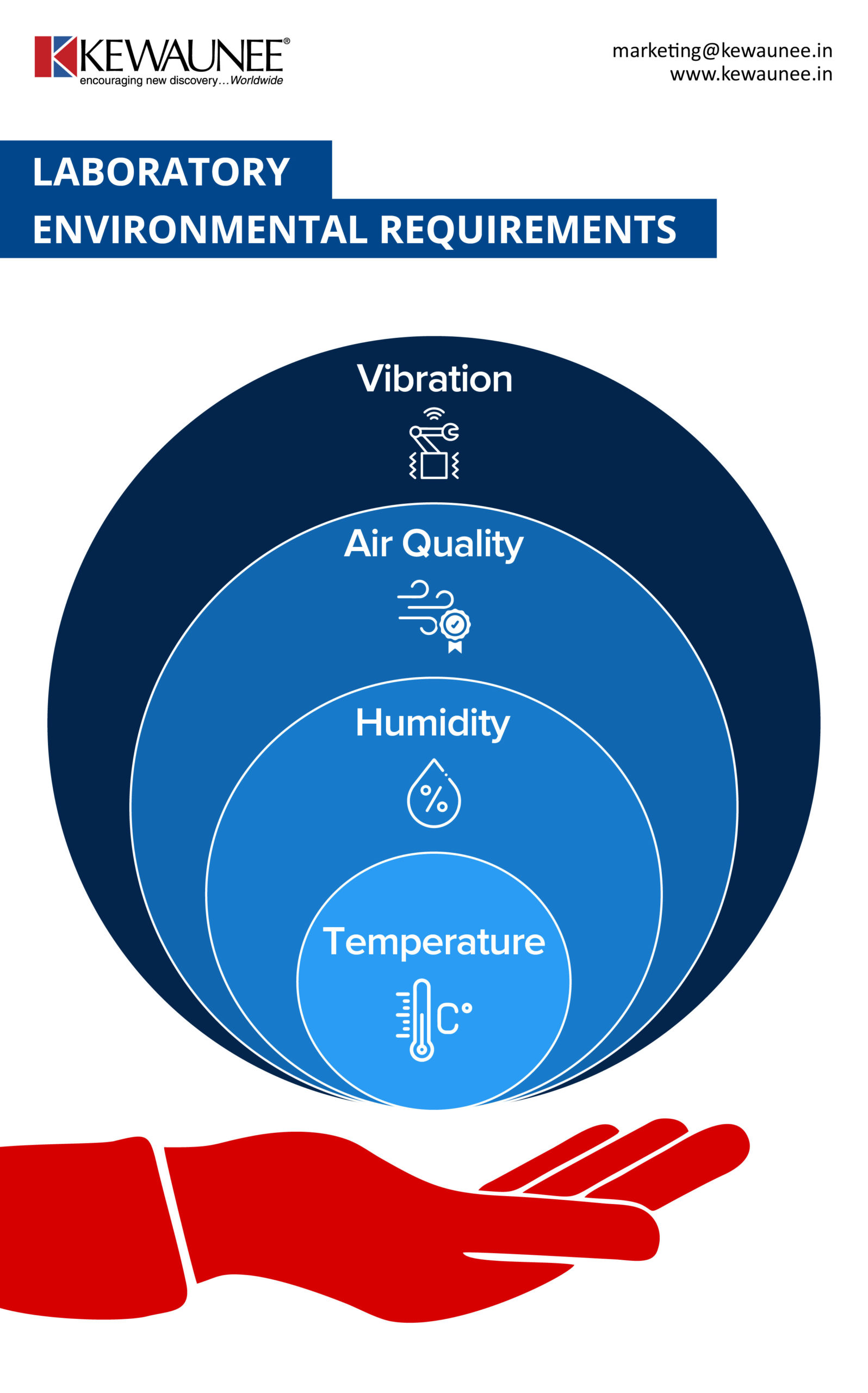Laboratory Environmental Requirements
Laboratories, unlike normal workplaces, are different environments. According to a study by NREL, a laboratory typically consumes 5 to 10 times more energy per square foot than office buildings. Specialty laboratories like clean rooms can consume as much as 100 times the energy of a similarly sized institutional or commercial structure.
Historically, the focus of laboratories has been on research. However, with growing environmental concerns, sustainability demands, and safety & well-being of the residents, the theme for the environmental requirements of the laboratories is drastically changing.
One of the key considerations during the lab design and the lab planning process is the environmental requirements of the laboratories. The environmental requirements extend beyond the current scope of the lab, but adaptability into the future needs with minimal modifications, personnel comfort and safety, and a carbon footprint as low as possible.
According to ASHRAE, there are two environments that should be considered:
- Macroenvironment: The actual interior space of the laboratory that surrounds the researcher and
- Microenvironment: A localized experimental space that has its own unique requirements.
In this blog, let’s explore the key environmental requirements that need to be factored in during the laboratory design and construction.
| Temperature | Ideally there shouldn’t be considerations major swings in the temperature (macroenvironment) in the lab and the hoods. For experiments conducted in microenvironments, considerations need to be made so that the required temperatures can be maintained. |
| Humidity | During planning, the necessary limits on humidity should be determined and the HVAC system planned accordingly. For example, clean rooms for electronics may have low humidity requirements, compared to another lab space. |
| Air Quality | Good air quality must be maintained within the laboratory. The design phase should consider potential sources of pollutants and contaminants and develop proper ventilation system to improve the indoor air quality. |
| Vibration | Vibration can originate from within (mechanical and electrical equipment) or outside a laboratory (traffic, pedestrians, wind, etc) and interfere with sensitive equipment in the laboratory. During the planning phase it is important to consider elements for minimizing the sources of vibration (e.g., isolators) or avoiding them altogether (e.g., choosing a location). |
Comments are closed.











